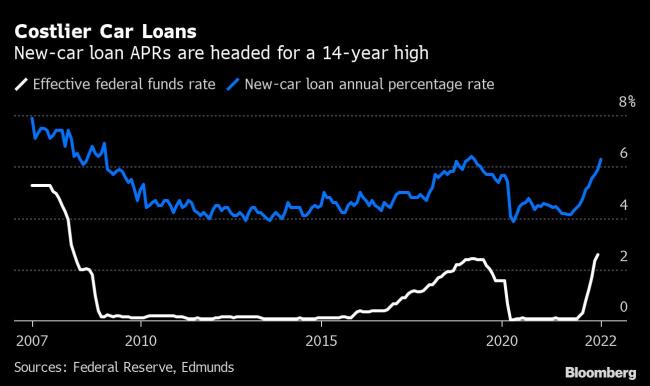(Bloomberg) -- Just as automakers start making headway sorting out the parts shortages that have constrained production and left dealers with a scarce supply of vehicles to sell, the Federal Reserve is putting up a new obstacle: much costlier car loans.
The average annual percentage rate on new-car loans was 6.3% last month, the highest since April 2019, according to Edmunds. The auto-market researcher’s data show APRs closely track the effective federal funds rate, which suggests financing a new vehicle will be costlier in the coming months than it’s been since early 2009.
“New-vehicle inventory might finally be improving, but the automotive industry is still on a long road to recovery because rising interest rates are creating a major barrier to entry for car shoppers,” Jessica Caldwell, executive director of insights for Edmunds, said in an email. “Many consumers who have been sitting out of the market due to high prices and limited options will likely continue to do so over high interest rates.”
The auto market has drastically changed since loan rates were last this high. The average amount financed toward a new-vehicle purchase last month was $40,438, according to Edmunds. That’s up 27% from $31,914 in April 2019.
“The average price of a vehicle has risen dramatically, there are fewer smaller, budget-friendly vehicles for shoppers to choose from,” Caldwell said. “And on top of that, consumers are paying more for everything else in their lives.”
©2022 Bloomberg L.P.
